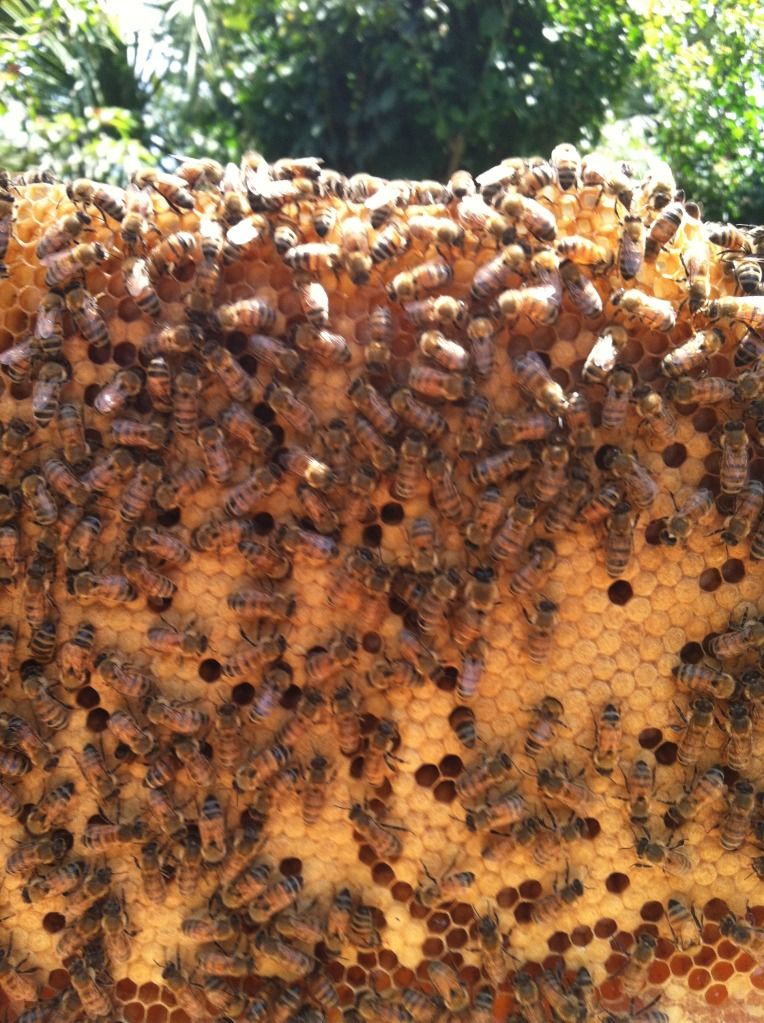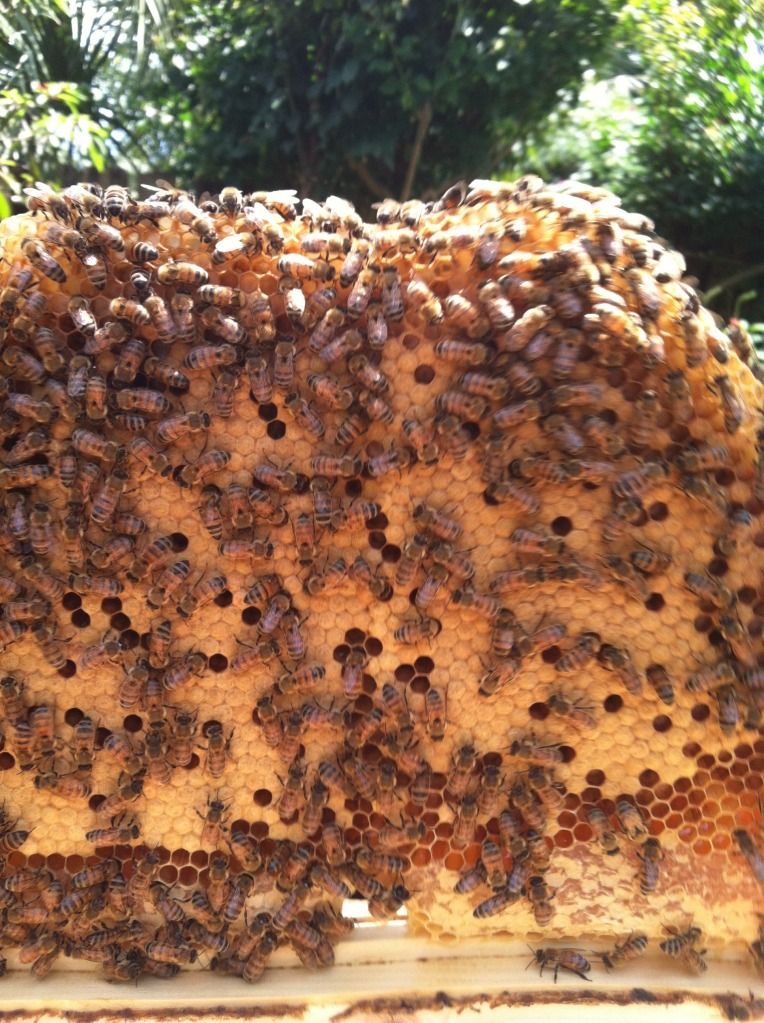I think Hive #2 has a queen. Again if I had better eyes I might be able to see the eggs better. I didn’t actually see the queen but I did see a fairly good laying pattern of capped brood and open larvae. I did see many bars with nectar and pollen. What I am trying to decide, is if what I am seeing is from the last queen that was present and suddenly disappeared, or is this new brood and larvae from the new queen. I think I saw some eggs, but I am not sure. I need to call my optometrist to see if she can fit me for a prescription that would help me see better in the hive. Progressive lenses and glasses are not good as I constantly have to adjust my eye position to see. I did add two bars of brood from hive #4 just in case they need eggs and brood to make a queen. I am not 100% sure this hive has a queen but all the queen cells that were present last inspection are gone. There are several bars towards the back of the hive that I should be able to harvest soon for honey!
Hives #3 and #4 are doing well. Hive #4 has a great queen. She is laying very well. Her abdomen is very elongated and she looks really good, and her laying pattern is very even. When I was in Albuquerque taking classes, one of the pearls I took away was the importance of rating the queen in each hive. Since I only have 4 hives it is not difficult to remember, but I have a book that I keep track of my hives and their progress each and every time I go into the hives. This book has been very important during these divides that I initiated this spring. I have been able to go back and read my notes and review what has been happening in the requeening process.
As I was working my hives today I was thinking about some of the things that Les Crowder talked about when he was teaching the classes. I found myself positioning the bars according to worker cells and drone cells. I moved all drone cells towards the back of the brood nest. I tried to keep the brood nest together. I moved darker comb and honey comb toward the back. I also moved bars with crooked or irregular comb towards the back so I could harvest them first. I took some bars that had double comb, and used the leaves from a plant to brush the bees off, and cut the comb off and repositioned it on an empty bar. I repositioned or reoriented bars with fat comb and made sure I position a straight comb in between. I came away from Albuquerque with many pearls of wisdom. Remembering them all and applying them will hopefully make me a better beekeeper. I am very grateful that I had the opportunity to attend the classes. I look forward to attending more classes in the future. I have heard many 30 year experienced beekeepers say they never stop learning as a beekeeper.
I am cautiously excited that maybe I have 4 hives that are finally Queen Right!!!
 |  |

No comments:
Post a Comment